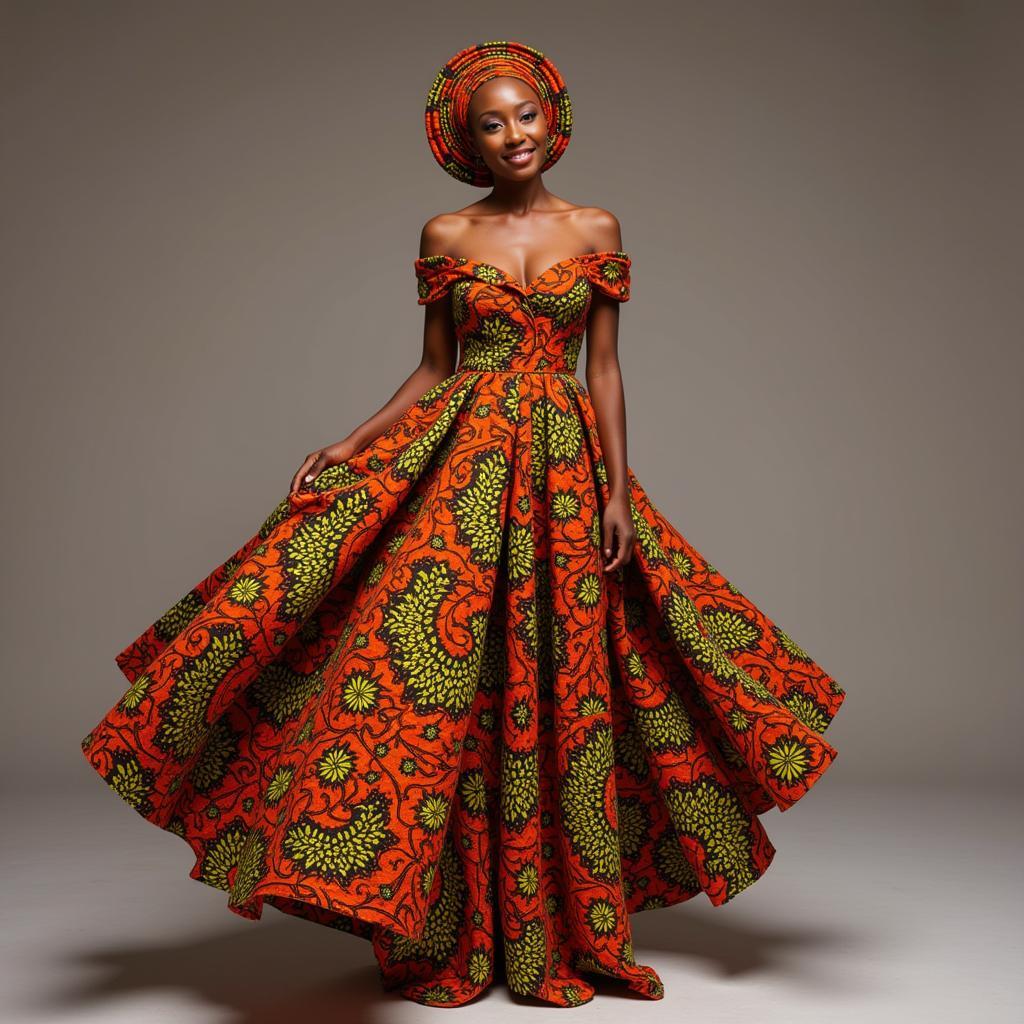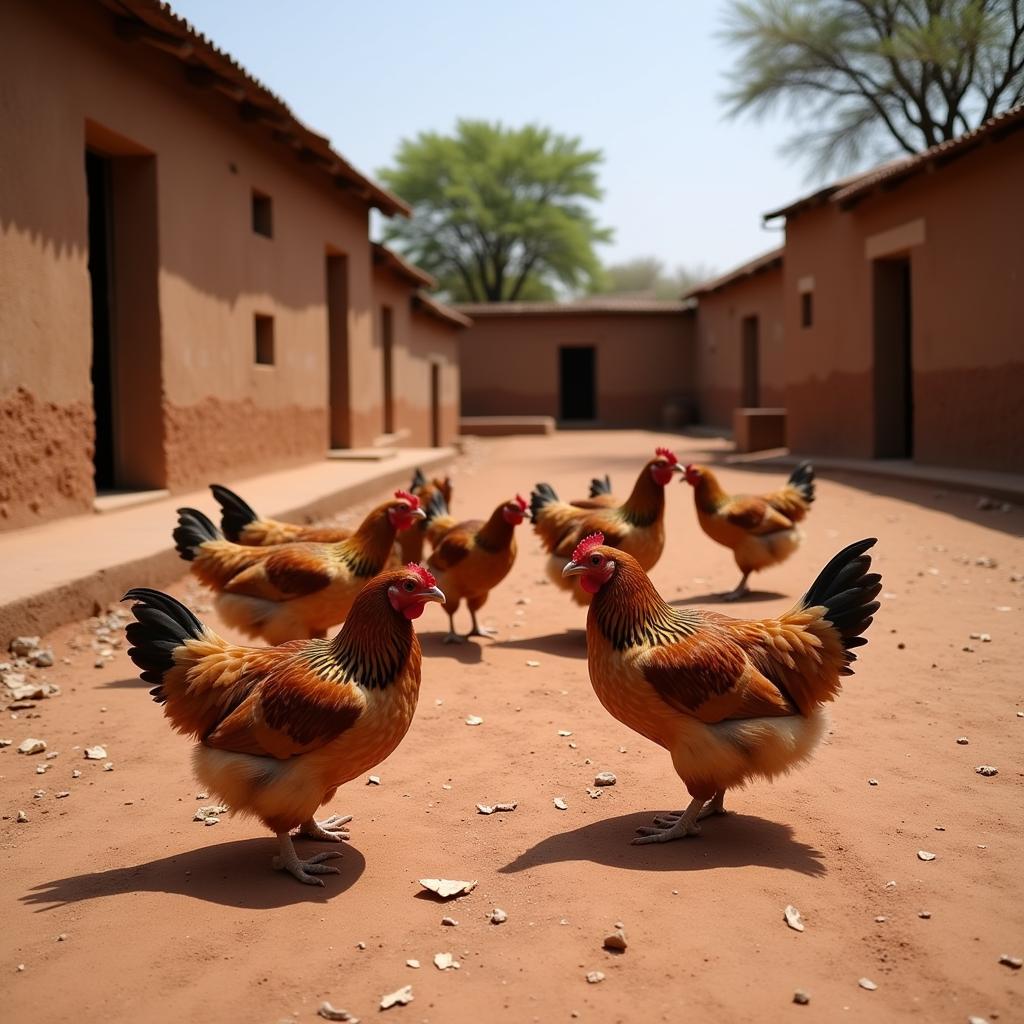Exploring the Beauty and Diversity of African Attire Skirts Designs
African attire skirts are a vibrant testament to the continent’s rich cultural heritage and diverse fashion aesthetics. From the flowing silhouettes of West Africa to the intricate beadwork of Southern Africa, these skirts capture the essence of African artistry and tradition. This exploration delves into the diverse world of African Attire Skirts Designs, uncovering their history, significance, and enduring appeal.
A Journey Through Time: The History of African Skirts
The history of skirts in Africa is deeply intertwined with the continent’s cultural evolution. Evidence suggests that early forms of draped garments, predecessors to modern skirts, were worn by both men and women in ancient African civilizations. These garments served both practical and symbolic purposes, reflecting social status, cultural identity, and even spiritual beliefs.
For instance, the Kente cloth of the Ashanti people in Ghana, traditionally woven into elaborate skirts, holds immense cultural significance. Its intricate patterns and vibrant colors convey specific meanings, often representing proverbs, historical events, or social hierarchies.
A Tapestry of Styles: Exploring Regional Variations
Across the vast expanse of Africa, skirt designs vary significantly from region to region, showcasing the unique artistic sensibilities of each cultural group.
West African Elegance: Bold Prints and Flowing Silhouettes
West Africa is renowned for its vibrant textiles and flowing skirt styles. The iconic iro and buba ensemble, popular in Nigeria, features a loose-fitting blouse paired with a voluminous, ankle-length wrapper skirt. These skirts are often crafted from brightly colored Ankara fabrics adorned with bold patterns and motifs.
 Nigerian Woman in Traditional Iro and Buba Ensemble
Nigerian Woman in Traditional Iro and Buba Ensemble
East African Flair: The Maasai Shuka and Beyond
In East Africa, the Maasai shuka, a rectangular piece of fabric draped around the body, demonstrates the region’s preference for bold colors and striking patterns. The shuka, typically red with black and blue accents, holds cultural significance and is worn by both men and women.
Southern African Sophistication: Beadwork and Ndebele Patterns
Southern Africa is celebrated for its intricate beadwork and vibrant geometric designs. The Ndebele people are particularly known for their distinctive beadwork, which adorns everything from clothing to houses. Ndebele skirts often feature these elaborate beadwork patterns, showcasing the tribe’s artistic prowess.
Modern Interpretations: African Attire Skirts on the Global Stage
Today, African attire skirts have transcended geographical boundaries, gracing runways and inspiring fashion designers worldwide. Contemporary designers are reimagining traditional styles, incorporating African prints, textures, and silhouettes into their collections. From high-fashion runways to everyday streetwear, these skirts are a celebration of African heritage and a testament to the continent’s enduring influence on global fashion.
Choosing the Perfect African Attire Skirt: A Guide
With countless styles and variations available, selecting the ideal African attire skirt can seem daunting. Here are some key factors to consider:
- Occasion: Consider the event for which you are dressing. A formal occasion might call for a sophisticated kente cloth skirt, while a casual outing might lend itself to a brightly printed Ankara skirt.
- Body type: Choose a style that flatters your figure. A-line skirts suit most body types, while mermaid skirts accentuate curves.
- Personal style: Don’t be afraid to experiment with different colors, patterns, and lengths to find a skirt that reflects your individual taste.
Conclusion: Embracing the Timeless Allure of African Attire Skirts
African attire skirts designs offer a captivating glimpse into the continent’s rich cultural tapestry. From their historical significance to their modern interpretations, these skirts continue to captivate and inspire. Whether you are drawn to bold prints, intricate beadwork, or flowing silhouettes, there is an African attire skirt design to suit every taste and occasion. By embracing these unique garments, we celebrate the beauty, diversity, and enduring legacy of African fashion.
Frequently Asked Questions About African Attire Skirts
1. What is the most popular type of African attire skirt?
While popularity varies by region, the Ankara skirt is widely recognized and celebrated for its vibrant prints and versatility.
2. Where can I find authentic African attire skirts?
You can find authentic African attire skirts from various online retailers specializing in African fashion, as well as from local markets and boutiques, especially those with ties to African communities.
3. How can I style an African attire skirt for a modern look?
Consider pairing a printed Ankara skirt with a simple white t-shirt and sneakers for a chic and effortless look. You can also dress up a skirt with heels and statement jewelry for a more formal occasion.
4. Are there specific colors or patterns that hold special meaning in African culture?
Yes, many colors and patterns in African textiles hold cultural and symbolic meanings. For example, gold often represents wealth and royalty, while red can symbolize strength and courage.
5. Are African attire skirts only for women?
While skirts are more commonly associated with women’s clothing in many parts of Africa, there are also traditional garments resembling skirts worn by men, such as the Maasai shuka and the Ghanaian fugu.
For more insights into African fashion and design, explore these related articles:
- african fashion designers in maryland
- african lace designs
- african design swiss voile fabric surat
- african attire skirts
- african dressing for women in villages
Need assistance or have questions about African attire skirts designs? Contact us at +255768904061, email us at kaka.mag@gmail.com or visit us at Mbarali DC Mawindi, Kangaga, Tanzania. Our customer support team is available 24/7 to assist you.




